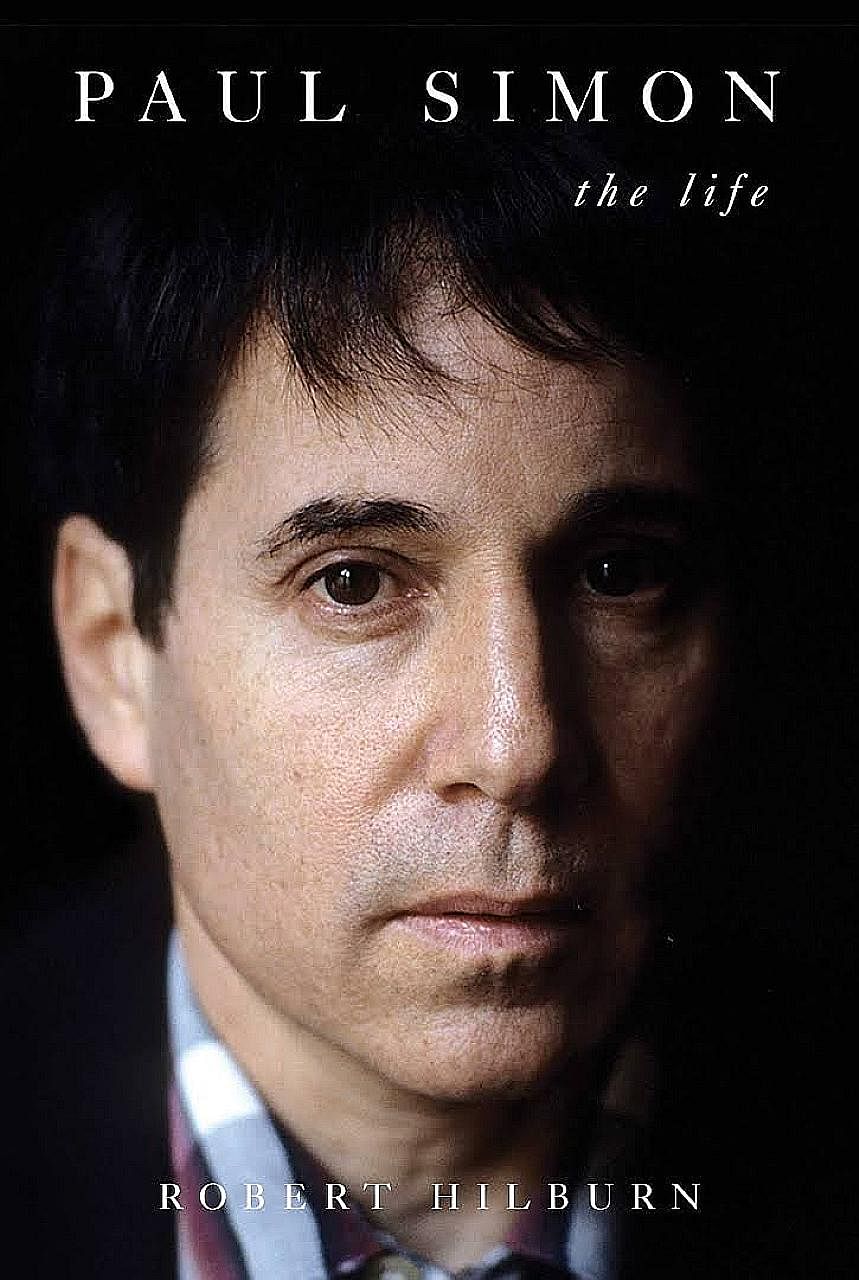NEW YORK • "Hello darkness, my old friend," Paul Simon and Art Garfunkel sang in the 1964 hit The Sound Of Silence.
In Robert Hilburn's new biography of Simon, Paul Simon: The Life, the cover photograph (photo) shows the musician full-faced but the image is clouded with darkness too.
The intention may well be to keep in tune with the introspective songs that Simon, 76, wrote.
For the record, he did not start out a titan, beginning his career singing in a duo named after two cartoon characters, Tom & Jerry.
Garfunkel, now 76, whom Simon befriended in sixth grade, was Tom.
By 1964, they had renamed themselves Simon and Garfunkel, and within a few years they had become a musical sensation, selling millions of records and touring widely.
As a solo performer after the duo split up in 1970, Simon's awards are even more eye-popping: more Grammys, the Johnny Mercer Award from the Songwriters Hall of Fame, a Kennedy Centre Honour and the first Gershwin Prize for Popular Song.
These awards substantiate Simon's most visible personality traits: ego and the propulsive pursuit of his art. He learnt early from his competitive father, a successful bandleader, who told him that "music was something to be treated with respect".

Simon made sure that others gave him respect. As a teenager navigating New York's dicey music business, he was savvy enough to make sure that he retained total publishing rights to his own songs.
In the biography, Hilburn supplies enough examples of Simon's squabbles with Garfunkel to wear down any reader.
Simon wants to be heard - and is widely quoted in the book.
He hates being short, sometimes gets depressed and loves his family, but when he does take readers into the deeper shadows, he reveals nothing totally unexpected or particularly dark.
Not much drug use, though beginning in 1994, he started using ayahuasca, a South American hallucinogenic.
Simon's comments about his own lyrics, many of which are printed in full throughout the book, are informative, but explaining the intricacies of poetic creation seems to elude him.
Perhaps, "Four in the morning/crapped out/yawning" is explanation enough. It is a great line from the 1975 hit Still Crazy After All These Years.
Simon does discuss his exploration of cultural rhythms from Africa and South America and how these new sounds made him rethink his songwriting.
He was vilified for not crediting other musicians and, in 1985, he refused to honour a United Nations boycott against performing in South Africa while working on his album Graceland.
He believes that no one should tell an artist what he can or cannot do, or whom he can work with.
History has been on Simon's side, and today his contribution to modern culture is indisputable.
The London Times has called him "the godfather of world music".
Those who disagree can take pleasure knowing that Simon's 1998 Broadway musical, The Capeman, shut down after 68 performances - and lasted that long only because Simon insisted.
Despite that fiasco, the musical, albeit much edited, was reprised in 2010, at the Delacorte Theatre in Central Park.
Whether you prefer Simon full-faced or shadowed, he certainly can write great songs. You will have to wait and see if he ever writes another now that he has announced his farewell tour.
But titans seldom stop, so why would Simon? He has always liked the sound of his own voice, as do millions of others.
As the lyrics go in The Sound Of Silence, "I've come to talk to you again". His fans will be more than happy to listen.
WASHINGTON POST
• Paul Simon: The Life is available from $27.28 at Books Kinokuniya.
